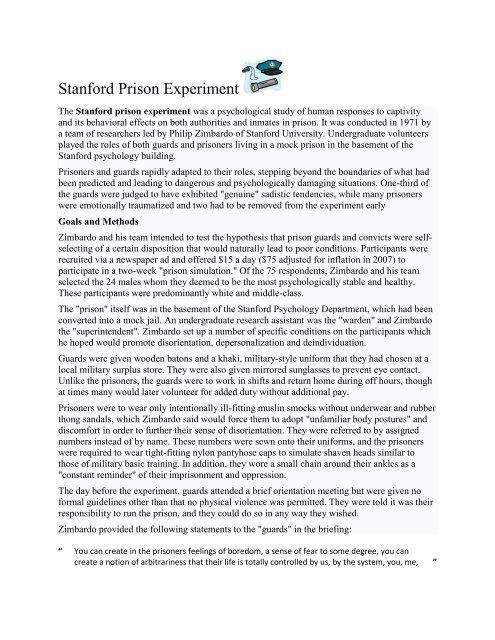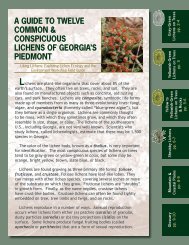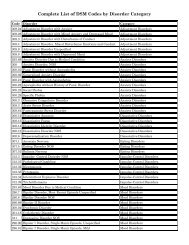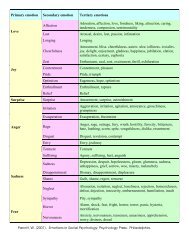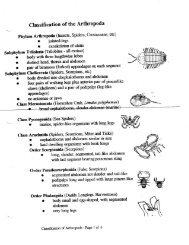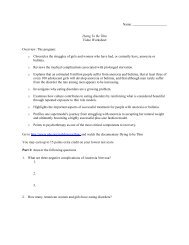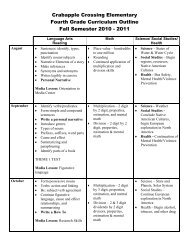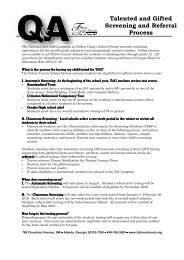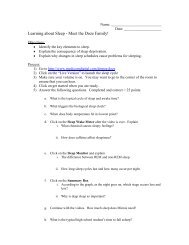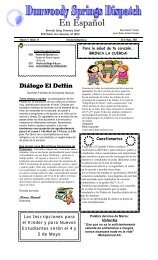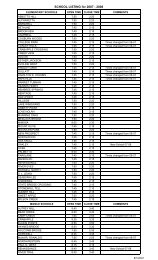Stanford Prison Experiment
Stanford Prison Experiment
Stanford Prison Experiment
- No tags were found...
You also want an ePaper? Increase the reach of your titles
YUMPU automatically turns print PDFs into web optimized ePapers that Google loves.
<strong>Stanford</strong> <strong>Prison</strong> <strong>Experiment</strong>The <strong>Stanford</strong> prison experiment was a psychological study of human responses to captivityand its behavioral effects on both authorities and inmates in prison. It was conducted in 1971 bya team of researchers led by Philip Zimbardo of <strong>Stanford</strong> University. Undergraduate volunteersplayed the roles of both guards and prisoners living in a mock prison in the basement of the<strong>Stanford</strong> psychology building.<strong>Prison</strong>ers and guards rapidly adapted to their roles, stepping beyond the boundaries of what hadbeen predicted and leading to dangerous and psychologically damaging situations. One-third ofthe guards were judged to have exhibited "genuine" sadistic tendencies, while many prisonerswere emotionally traumatized and two had to be removed from the experiment earlyGoals and MethodsZimbardo and his team intended to test the hypothesis that prison guards and convicts were selfselectingof a certain disposition that would naturally lead to poor conditions. Participants wererecruited via a newspaper ad and offered $15 a day ($75 adjusted for inflation in 2007) toparticipate in a two-week "prison simulation." Of the 75 respondents, Zimbardo and his teamselected the 24 males whom they deemed to be the most psychologically stable and healthy.These participants were predominantly white and middle-class.The "prison" itself was in the basement of the <strong>Stanford</strong> Psychology Department, which had beenconverted into a mock jail. An undergraduate research assistant was the "warden" and Zimbardothe "superintendent". Zimbardo set up a number of specific conditions on the participants whichhe hoped would promote disorientation, depersonalization and deindividuation.Guards were given wooden batons and a khaki, military-style uniform that they had chosen at alocal military surplus store. They were also given mirrored sunglasses to prevent eye contact.Unlike the prisoners, the guards were to work in shifts and return home during off hours, thoughat times many would later volunteer for added duty without additional pay.<strong>Prison</strong>ers were to wear only intentionally ill-fitting muslin smocks without underwear and rubberthong sandals, which Zimbardo said would force them to adopt "unfamiliar body postures" anddiscomfort in order to further their sense of disorientation. They were referred to by assignednumbers instead of by name. These numbers were sewn onto their uniforms, and the prisonerswere required to wear tight-fitting nylon pantyhose caps to simulate shaven heads similar tothose of military basic training. In addition, they wore a small chain around their ankles as a"constant reminder" of their imprisonment and oppression.The day before the experiment, guards attended a brief orientation meeting but were given noformal guidelines other than that no physical violence was permitted. They were told it was theirresponsibility to run the prison, and they could do so in any way they wished.Zimbardo provided the following statements to the "guards" in the briefing:“ You can create in the prisoners feelings of boredom, a sense of fear to some degree, you cancreate a notion of arbitrariness that their life is totally controlled by us, by the system, you, me, ”
and they'll have no privacy… We're going to take away their individuality in various ways. Ingeneral what all this leads to is a sense of powerlessness. That is, in this situation we'll have allthe power and they'll have none. — The <strong>Stanford</strong> <strong>Prison</strong> Study video, quoted in Haslam &Reicher, 2003.The participants who had been chosen to play the part of prisoners were told simply to wait intheir homes to be "called" on the day the experiment began. Without any other warning, theywere "charged" with armed robbery and arrested by the actual Palo Alto police department, whocooperated in this part of the experiment.The prisoners were put through a full booking procedure by the police, including fingerprinting,having their mug shots taken, and information regarding their Miranda rights. They weretransported to the mock prison where they were strip-searched, deloused, and given their newidentities.Directions: Go to the website, read the passage and then answer the questions on a separate sheet ofpaper in full sentences1. What police procedures are used during arrests, and how do these procedures lead people to feelconfused, fearful, and dehumanized?2. If you were a guard, what type of guard would you have become? How sure are you?3. What prevented "good guards" from objecting or countermanding the orders from tough or badguards?4. If you were a prisoner, would you have been able to endure the experience? What would youhave done differently than those subjects did? If you were imprisoned in a "real" prison for fiveyears or more, could you take it?5. What factors would lead prisoners to attribute guard brutality to the guards' disposition orcharacter, rather than to the situation?6. What is "reality" in a prison setting? This study is one in which an illusion of imprisonment wascreated, but when do illusions become real? Contrast consensual reality and physical or biologicalreality, and explain the implications of the following poem (by PGZ):Within the illusion of life,Death is the only reality,butis Reality the only death?Within the reality of imprisonment,Illusion is the only freedom,butis Freedom the only illusion?7. Do you think that kids from an urban working class environment would have broken downemotionally in the same way as did our middle-class prisoners? Why? What about women?
8. After the study, how do you think the prisoners and guards felt when they saw each other in thesame civilian clothes again and saw their prison reconverted to a basement laboratory hallway?9. Was it ethical to do this study? Was it right to trade the suffering experienced by participants forthe knowledge gained by the research? (The experimenters did not take this issue lightly,although the Slide Show may sound somewhat matter-of-fact about the events and experiencesthat occurred).10. How do the ethical dilemmas is this research compare with the ethical issues raised by StanleyMilgram's obedience experiments? Would it be better if these studies had never been done?11. If you were the experimenter in charge, would you have done this study? Would you haveterminated it earlier? Would you have conducted a follow-up study?12. Knowing what this research says about the power of prison situations to have a corrosive effecton human nature, what recommendations would you make about changing the correctionalsystem in your country?


